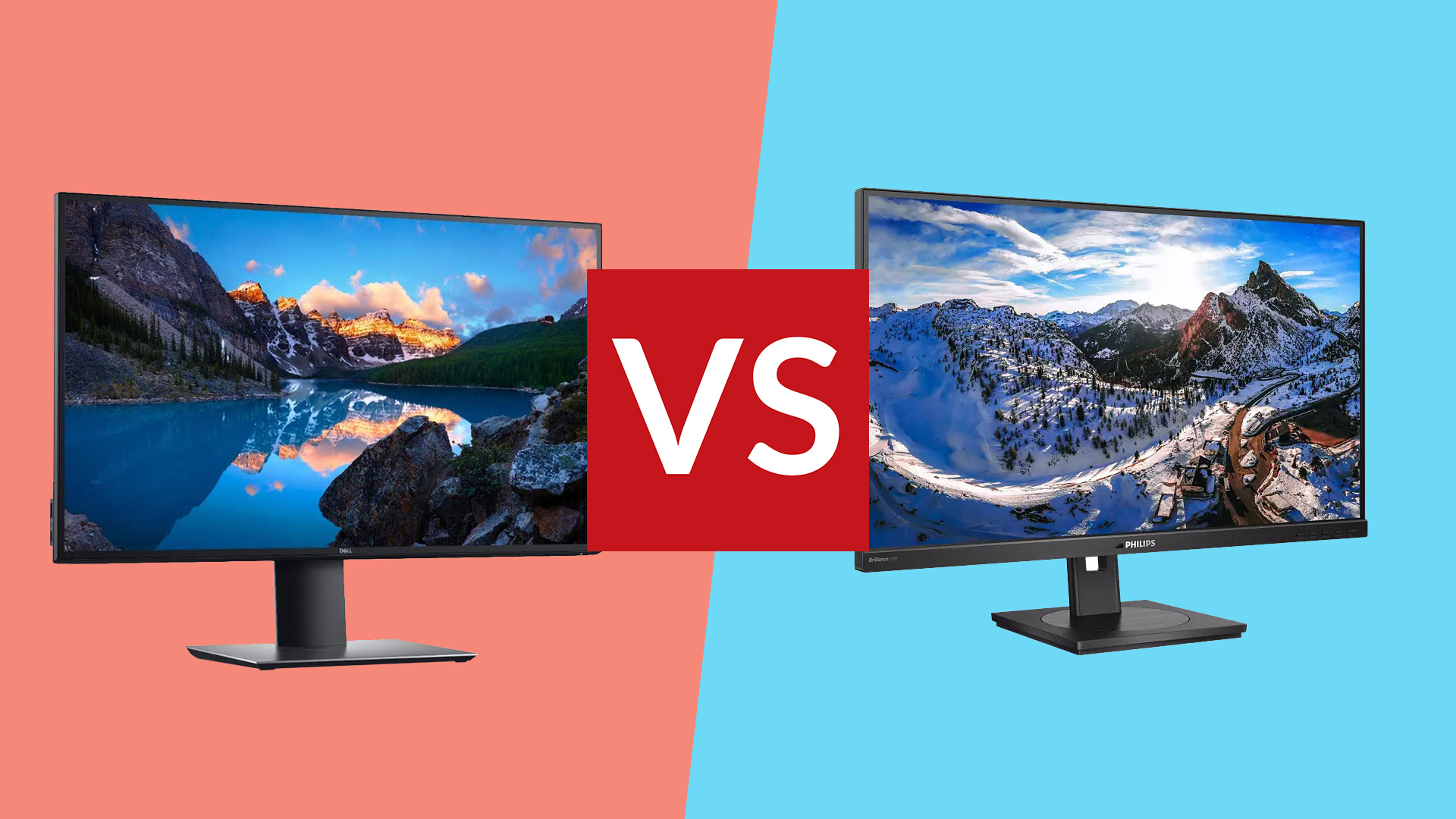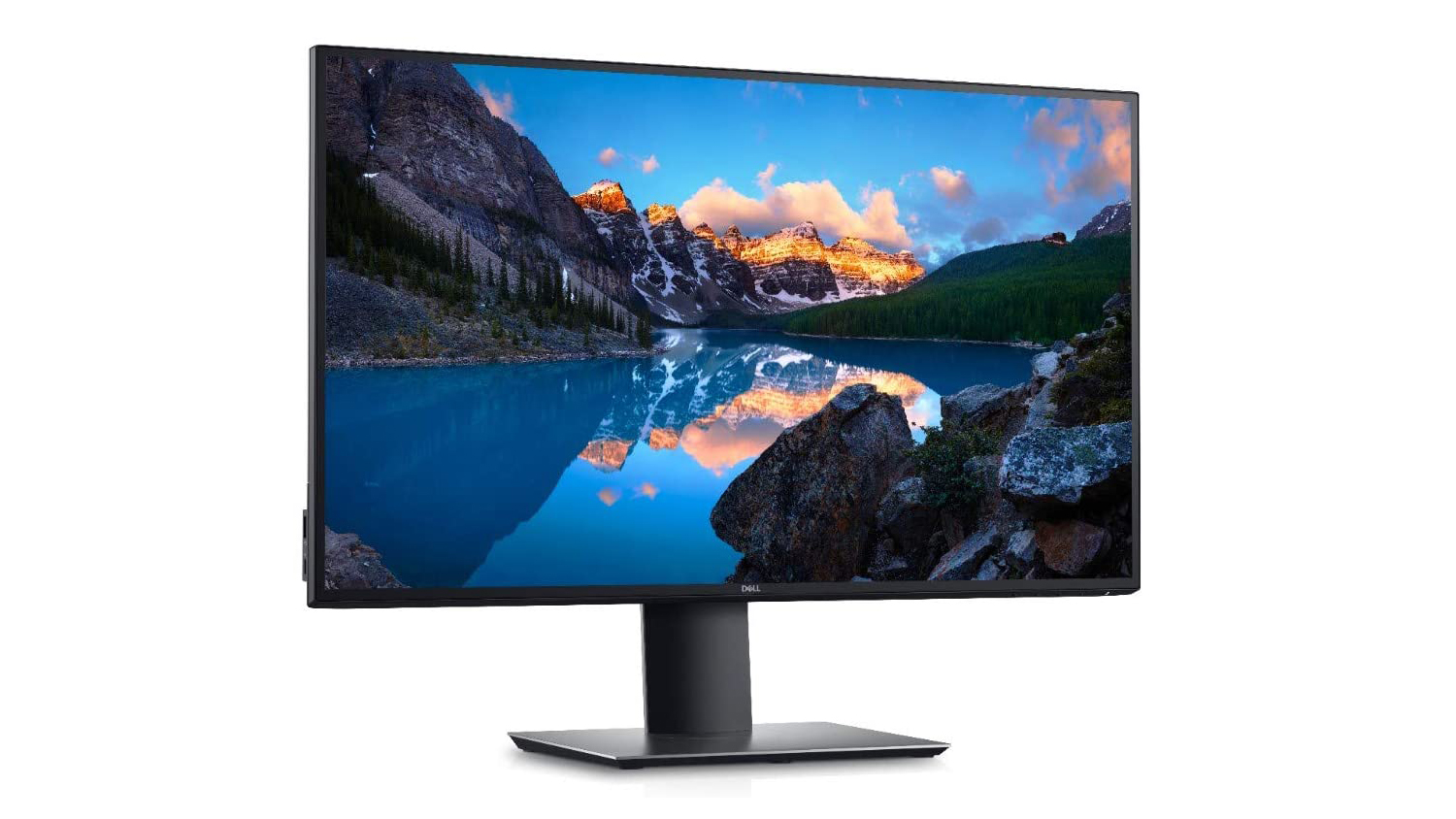
The Dell U2720Q and Philips 279P1 are two of the best home office monitor options, if you want the big working canvas that 4K gives you. Thanks to USB-C connectivity, they're two of the best monitors for MacBook Pro, as well as being excellent 4K monitors.
27 inches is a pretty good size for a monitor. It’s just enough that, at normal office viewing distances (you know you sit closer than you should) you have to turn your head slightly to see what’s on the extreme right or left. You can easily have two documents, or web pages, side by side without feeling uncomfortably cramped, and the tight pixel density of 4K at 27 inches means text is smooth and lacking in jaggies, while photo editors will love how sharp their images appear.
Gamers will appreciate it too. Hook one of the latest generation of PC graphics cards to the DisplayPort input, then one of the best streaming sticks and a hot new games console to the HDMIs, and you’ve got maybe the only screen you need. Oh, and you’ll need separate audio too.
These two screens will be very tempting if you're looking at the current options, so let's see how they stack up, so you can see which is best for you.
Dell U2720Q vs Philips 279P1: Price & features
The Dell monitor, with its RRP of £655/$780, outstrips the Phillips in the price stakes. You can pick up the Dell U2720Q for £100/$100 less than RRP from many retailers (see the latest prices just below), but this still doesn’t reach parity with the Philips 279P1, which can be had for around £450/$600.
Seeing as the two have very similar features, this makes the Phillips screen look like a bit of a bargain.
Both screens have IPS panels with LED backlights, which are just about the best you can get without heading into exotic tech such as OLED or Nano-IPS monitors, which push the price up. Their connectivity is similar too, with both monitors home to USB hubs that connect to your laptop with one cable – a USB Type-C that carries video signals as well as data and power (90W from the Dell, 65W from the Philips).
Sign up to the T3 newsletter for smarter living straight to your inbox
Get all the latest news, reviews, deals and buying guides on gorgeous tech, home and active products from the T3 experts
The only difference is that the Philips also has an ethernet port for wired networking, and has two Type-A USB ports on its left side, where the Dell has a Type-A and a Type-C.
The stands are functional, and both are able to rotate the screen into the portrait orientation. There’s a full range of pivots, tilts, and height adjustments available.

The Dell U272Q is a classic-looking Dell work monitor.
Dell U2720Q vs Philips 279P1: Image quality
LED IPS panels are among the best you can get for this sort of money, and with a pixel density of 163ppi, a 27in 4K screen is really packing them in.
While they may share underlying panel technology, the screens respond differently, displaying different labels of colour. The Philips can display 122% of the sRGB gamut with its 30-bit (ten per channel) colour system and typical contrast ratio of 1000:1.
They both have the same peak brightness, of 350 cd/m², and the same 60Hz refresh rate, but the Dell is calibrated slightly differently – it also uses 10 bits per channel, but displays 99% of sRGB, and also 99% of the Rec 709 colour gamut designed for digital video.
Out of the box, and without a colourimeter to hand, designers and video editors are going to prefer the Dell, as the colours that appear on the screen will more accurately match the way they’re supposed to look.
Dell U2720Q vs Philips 279P1: Design & connectivity
The chassis design of the two screens is nothing to write home about – they’re black rectangles with bezels of varying thinness – the Dell is almost uniform all the way around, while the Philips is distinctly thicker at the bottom. Both have a pair of USB ports integrated into the left-hand side of the screen (two USB Type-As for the Philips, one for data and one for charging; while the Dell has a Type-A that can be used for power and data transfer, and a Type-C that’s just for data).
The thinness of the side bezels means you can place two side-by-side without having too much of a barrier between them, but sadly there doesn’t seem to be any clever daisy-chaining through the USB Type-C or DisplayPort sockets.
Along with the USB hubs we’ve already mentioned, you’ll find one DisplayPort 1.4, and two HDMI 2.0 ports on the Philips, and one of each on the Dell. Both screens have a 3.5mm audio out jack that will take the audio data from your video inputs and pipe it to headphones or speakers.
The built-in speakers on the Philips are, as usual, really not worth having. We're on board with the Dell just not bothering to include them (we have the best wired headphones, best wireless headphones and best Bluetooth speakers, if you want something worth listening to).

The Philips 279P1 is a plain-looking monitor, just like the Dell.
Dell U2720Q vs Philips 279P1: Verdict
A monitor of this size and resolution is an excellent companion for the PCs, consoles and streaming sticks we increasingly surround ourselves with. You get the benefits of an IPS LED panel and a 4K pixel density, even if the 60Hz refresh rate isn’t going to attract the kind of gamers dazzled by 120Hz panels elsewhere.
Either of these screens will be a handsome addition to a home office, and can do double-duty as a console companion or home to a streaming stick too. The Dell is more expensive, and calibrated a little flat as it’s aimed at designers and office workers. The Philips' quality remains very impressive for the price, though Whichever one you choose, you’re unlikely to be disappointed.

